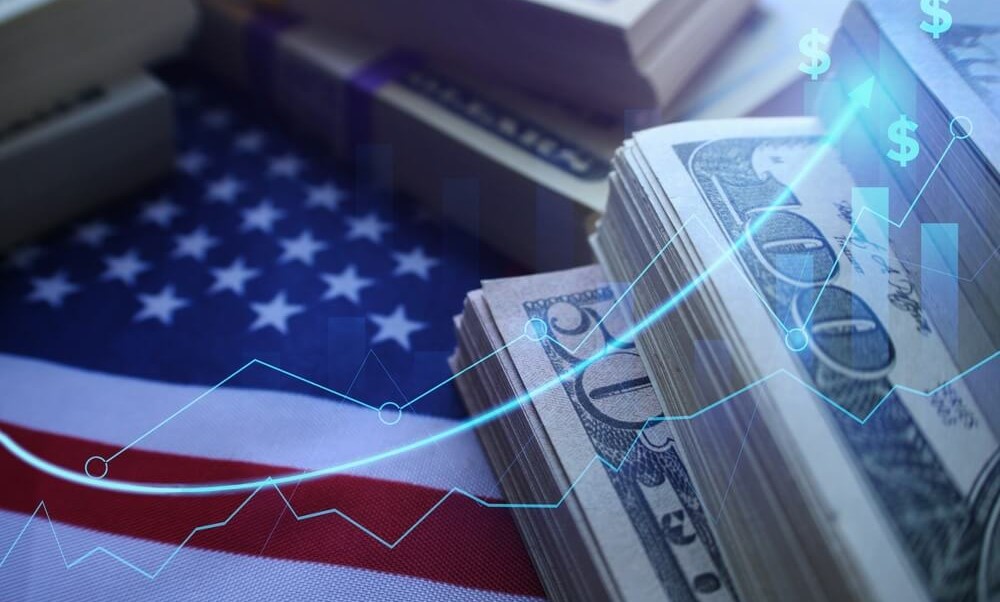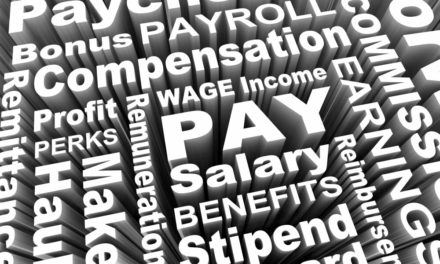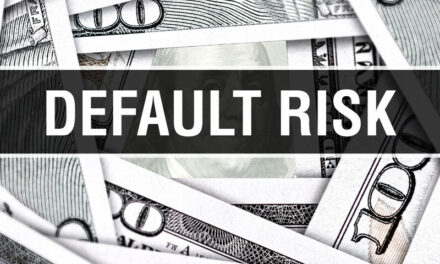Understanding how the U.S. economy works seems complex.
When you factor in global economic threats like the conflict between Russia and Ukraine or COVID-19, that complexity can feel insurmountable.
But if you boil things down to the basics, it becomes a lot easier to understand.
I’ll show you seven factors that determine how the U.S. economy works — and why they should matter to you as a smart investor.
The 7 Factors of How the U.S. Economy Works
1. Supply and Demand
Supply and demand is one of the biggest driving forces of the economy.
It’s easy to think of supply and demand in relation to products like milk, bread and other consumer essentials.
But natural resources are also part of the supply and demand equation.
Oil, land and water are all natural resources with limited supply.
The price of oil has a significant impact on the price of a gallon of gas for your car.
In 2022, the price of a barrel of oil has risen more than 40% as suppliers try to make sense of the Russia-Ukraine conflict. It hit a high of $123 per barrel at one point!
That’s caused U.S. gas prices to increase by 25% in the first months of 2022.
Demand is the biggest drivers of the economy, as product prices are in part determined by demand for that product. When prices go up, in most situations, demand goes down.
If the latest iPhone was only $50, more consumers would buy it.
However, if the same iPhone was $5,000, demand would be much less. Many consumers would be priced out of that market.
The supply side of the equation works the same way, only geared toward impacting suppliers.
If that iPhone was priced at $50 retail, it’s likely the manufacturer would make less because of the lower profit margin.
However at $5,000, there would be more iPhones manufactured because the manufacturer would make an enormous profit.
Because of its impact on the economy, supply and demand is one of the seven factors of how the U.S. economy works.
2. Gross Domestic Product
A country’s gross domestic product (GDP) is simply the value of any goods and services produced by that country in a year.
The higher the GDP, the more value is attached to those goods and services.
Since 2015, the United States’ GDP has grown 33%. That growth has been steady with the exception of a dip in the middle of 2020 due to the COVID-19 pandemic.
In the last two quarters of 2021, GDP grew 7.6% — indicating steady growth.
GDP growth or contraction is a go-to indicator for the overall health of the economy.
When the GDP is expanding at a rapid pace, a country’s economy is growing. It creates jobs and spurs business and investment growth.
A slower rate of growth, or even contraction, means the opposite will happen.
Because it is the most common tracker of economic health, GDP is one of the seven factors of how the U.S. economy works.
3. Inflation and Deflation
A big impact of supply and demand is inflation.
When demand is greater than supply, you can have a period of inflation. And it’s a challenge to bring inflation down again.
Economic inflation creates higher prices for goods and services in most cases.
It’s easy to see how inflation affects your daily life. Just look at the rate of price increases compared to the rate your income changes.
Inflation is determined by the Consumer Price Index, which measures the average change in prices for goods and services.
The 12-month rate of inflation reached its highest point in 40 years in February 2022 at 7.9%.
Conversely, when product prices fall, it can create deflation. Deflation can also occur with housing prices and stocks, which has a worse effect on the economy than inflation.
Because the rate of inflation and deflation affects economic performance, it is one of the seven factors of how the U.S. economy works.
4. Trade Policy
The simple definition of trade policy is the goals, rules and regulations that relate to how countries trade with each other.
But there are other nuances that make up trade policy:
- Import-export policy.
- Tariffs.
- Quotas.
For an example of trade policy in action, let’s look at the ongoing trade dispute between the U.S. and China.
Back in 2018, U.S. officials wanted to shrink the growing trade deficit between the U.S. and China.
The idea was to put tariffs (like a tax) on Chinese imports while also asking China to buy more American-made goods.
The ongoing dispute roiled markets throughout the following year or so.
Most nations will negotiate trade agreements with individual countries or regions. These agreements define terms like how much product each country can and should buy from one another.
Trade is also affected by exchange rates. Because the U.S. dollar is the transactional currency in most trade agreements, a strong dollar can sink commodity prices. That can create deflation.
That’s why trade policy is one of the seven factors of how the U.S. economy works.
5. Federal Budget
It’s important to know that you and I aren’t the only ones spending money on goods and services in the U.S.
The federal government is a big driver of business spending.
This is dictated by the federal budget. Each year the president presents a budget, but only Congress has the authority to spend money.
The budget includes both revenue coming in and expenses going out. Revenue coming in is generated by personal and corporate taxes paid each year.
This goes back to supply and demand. It is common to suggest tax cuts for individuals and businesses, putting more money in your pocket. The intent is that you use that money to either grow your business or spend more discretionary income on goods and services.
More often than not, the government spends more than it brings in. This creates a budget deficit.
In fiscal year 2021, which ended on September 30, 2021, the federal budget deficit totaled around $2.8 trillion — nearly $360 billion less than the deficit in 2020.
As you can see from the chart above, the U.S. government significantly increased spending after the first quarter of 2021. This came in the way of stimulus checks for individuals as well as loan and grant programs for businesses.
It’s also important to note that the federal deficit wasn’t always this high. From 2012 to 2013, the budget deficit dropped from $1.1 trillion to $719 billion. In 2019, the federal deficit was about $1 trillion.
Because it dictates federal spending, the federal budget is one of the seven factors of how the U.S. economy works.
6. Fed Interest Rates
One thing the federal government can do to help control inflation is enact different monetary policies.
The Federal Reserve is a key component of that as the central bank controls interest rates.
At the onset of the COVID-19 pandemic, the Federal Reserve elected to drop its benchmark federal funds rate from between 1.5% and 1.75% to 0% to 0.25% — which is where rates have been since March 2020.
Note: The Fed raised its benchmark interest rate 0.25% on Wednesday, March 16, 2022.
When the economy slows down, the Fed can cut rates to make it more enticing to borrow money or invest.
Businesses are encouraged to add jobs or invest more; and individuals may spend more or even borrow more money. These things can spur economic growth.
The downside is when the rate is too low, economic expansion can happen too fast, causing inflation. This is when the Fed will raise rates so you won’t spend as freely, thus slowing down the rapid growth.
The Fed’s rates also determine the interest rates of U.S. public debt.
Just like with any personal loan, the lower the interest rate, the less the payment on the debt is. Lower interest rates mean lower debt service. The nation’s debt is basically an accumulation of budget deficits. That debt is currently around $30.2 trillion.
These fed fund rates are instrumental in expanding or pulling back economic growth. That’s why they are one of the seven factors of how the U.S. economy works.
7. The Stock Market
Now, before I jump into this, let me preface: The stock market is not the economy.
However, the stock market can be used to gauge how the economy is doing. The stronger the economy, the more investors want to buy. The worse the economy, the greater potential for a market pullback.
When the market pulls back, it means investors aren’t as confident in the state of the economy. Stock prices go down, and businesses have less capital to work with. Business expansion halts, and it can even lead to job cuts.
High inflation, supply and demand issues and conflict in Ukraine pushed the stock market down in the first part of 2022.
Remember the fed fund rates I just mentioned? They, too, can have an impact on the markets.
Higher interest rates mean money is more expensive to borrow. Companies won’t borrow as much to pay for goods and services — thus impacting supply and demand.
Reduced access to capital can also have an adverse impact on stock prices. If a company has to allocate more money to pay back loans, that’s less money going into the pockets of its investors.
So the stock market can be a strong gauge to overall economic health. That’s why it is one of the seven factors in how the U.S. economy works.
The bottom line: The U.S. economy seems like a complex operation, but these factors can help you figure out how it all works.
From inflation to interest rates, a lot factors into economic growth. If you notice a change in one factor, look at some of these others to see how everything is connected.
Safe trading,

Matt Clark, CMSA®
Research Analyst, Money & Markets
Matt Clark is the research analyst for Money & Markets. He is a certified Capital Markets & Securities Analyst with the Corporate Finance Institute and a contributor to Seeking Alpha. Prior to joining Money & Markets, he was a journalist and editor for 25 years, covering college sports, business and politics.
Story updated on March 16, 2022.





